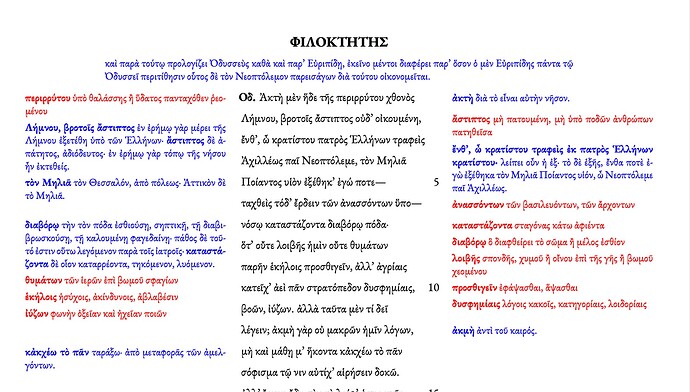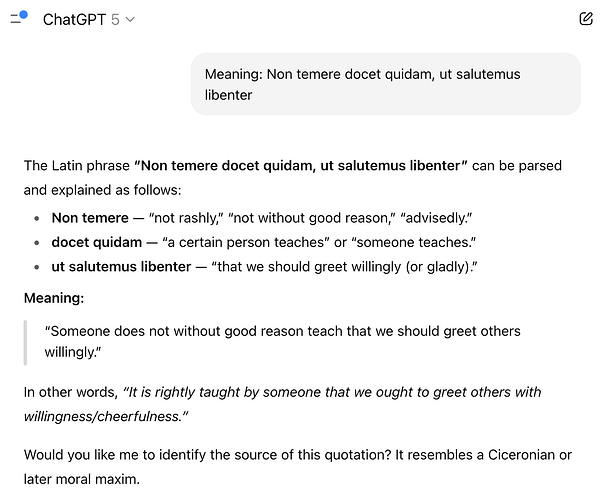I have been playing around with adding scholia and other language help to texts. Here the blue are the scholia from the 1888 Teubner, Scholia in Sophoclis tragoedias vetera, and the red is a ChatGPT/Grok “thinking” model definitions for a few words that I chose.
This is complicated, because the AI does not know the semantics of the words. For example: nom temere docet quidam,ut salutemos libenter (Erasmus, Colloquia). The word ‘‘temere’’ is translated as fear, temor in Portuguese,totally different from the original meaning.
I corrected the spelling in the Erasmus sentence and fed it into ChatGPT 5 “Auto”:
You’ll have to tell me how it does with the Portuguese:
The sentença in Portuguese is like this:Alguém ensina com razão,que devemos cumprimentar com alegria.
So “temere” was translated correctly. Whether “de bom grado” or or “com alegria” is a better translation of “libenter”, I will leave up to you. The English translation, however, was just fine. To me it would seem that LLMs can correctly infer word semantics.
In the Greek above, which is what the thread was actually about, the worst red-text error that I noticed (and removed) was the following “definition” for “μαστὺν” on line 43: μαστὺν – μαστὸς, ὁ τῶν θηρίων καὶ γυναικῶν, ὅθεν γάλα ῥεῖ. Philoctetes has not gone out for breast-milk, however, and the word should actually mean “search”. Here’s the LSJ Supplement:

The manuscripts have νόστον, with μαστὺν marked as “Toup” in the older OCT apparatus (Jonathan Toup?). I don’t have the newer Lloyd-Jones/Wilson OCT, but apparently they elevated the μαστὺν guess to the main text (but νόστον was probably original, imo).
reading this is exceptional.
Nice.
Just curious, which font are you using, and why did you choose this font? Is it a favorite font?


